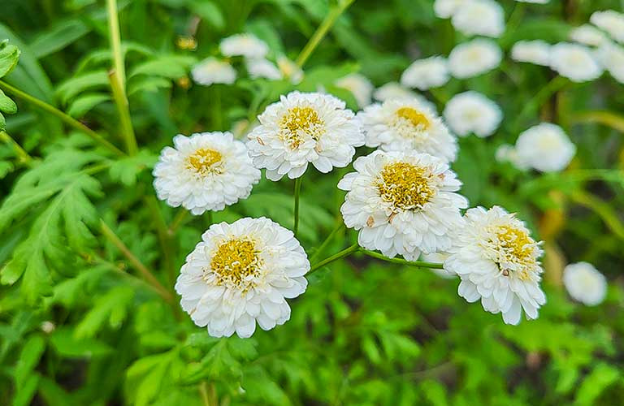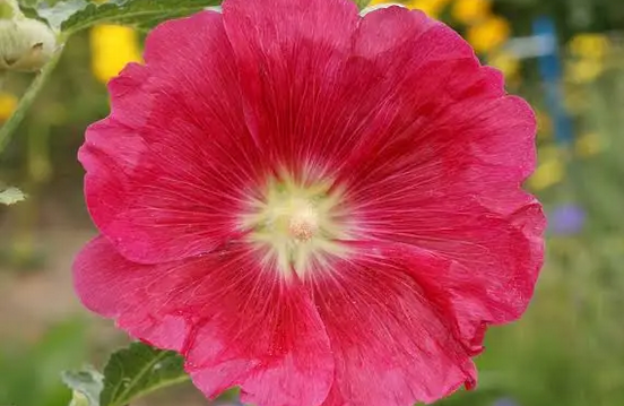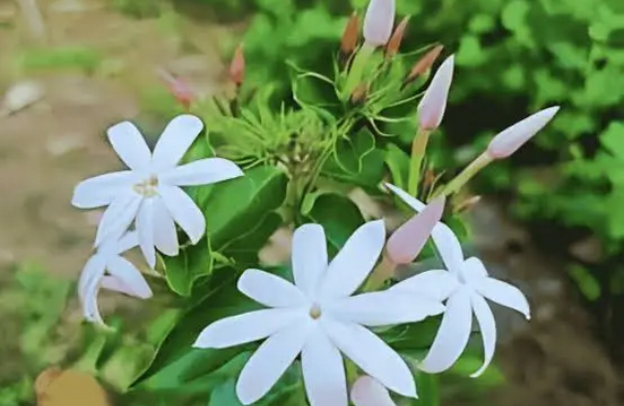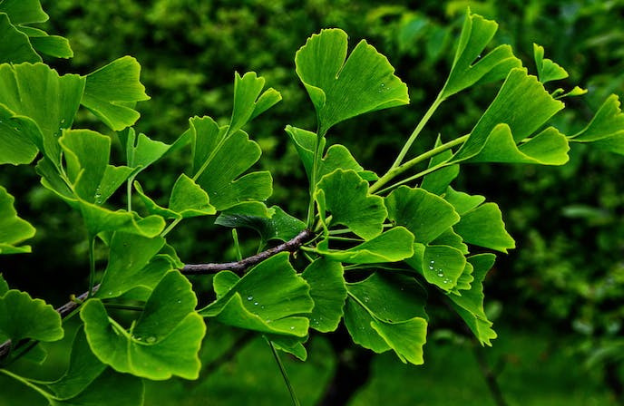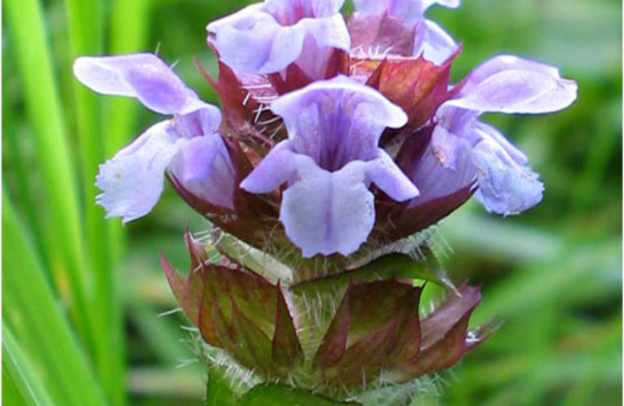Imagine it like this: You’re sitting in your home, lights off, curtains drawn. Your head is pounding, and you feel nauseous. You’ve tried pills, coffee, rest… nothing works. Then someone hands you a cup of herbal tea with a bitter kick and says, “Try this, it’s called feverfew.” That moment might just be the start of your journey into natural healing.
Feverfew, an ancient plant with a funny name, has been used for centuries to ease headaches and bring down fevers. But it’s more than just a folk remedy. Across Africa and around the world, people are turning back to plants like this, partly out of tradition, partly because they work.
So, let’s talk about feverfew: how it helps, where it fits in African healing practices, and how you can safely give it a try.
What Is Feverfew, Anyway?
Feverfew (Tanacetum parthenium) is a small plant with white and yellow daisy-like flowers. It’s native to Europe, but today you can find it growing in gardens and wild spaces around the world, even in some parts of Africa.
People have used feverfew for thousands of years, especially for fevers and migraines. Its name literally means “fever reducer.”
What makes it powerful? A compound called parthenolide, found in the leaves. This natural chemical helps reduce inflammation and calm the blood vessels in your head—both big triggers for migraines.
Researchers according to the National Library of Medicine have also identified a range of sesquiterpene lactones, including: artecanin, artemorin, balchanin, canin, costunolide, 10-epicanin, epoxyartemorin, 1β-hydroxyarbusculin, 3β-hydroxycostunolide, 8α-hydroxyestagiatin, 8β-hydroxyreynosin, 3β-hydroxyparthenolide, manolialide, reynosin, santamarine, epoxysantamarine, secotanaparthenolide A, secotanaparthenolide B, tanaparthin-α-peroxide, and 3,4β-epoxy-8-deoxycumambrin B. See the following table for more information.

Does It Actually Work? The Science Says… Kind Of
So, here’s the truth: Feverfew won’t work for everyone. But studies have shown that for some people, especially those with recurring migraines, it can make a real difference.
One study from the 1980s found that about 70% of people who used feverfew regularly had fewer migraines, and the headaches they did have were less intense. Some newer studies also show that feverfew may slightly reduce how often migraines hit by maybe one less migraine a month.
See also the following Headline publication to learn more What Is Feverfew, and Does It Work for Migraine Attacks?
It’s not magic. But if you’ve struggled with migraines for years, even a little relief can feel like a big deal.
When it comes to fevers, research is more limited. But traditionally, feverfew has been used to “cool down the body,” especially when someone’s burning up from a viral illness.
Feverfew and African Traditional Medicine: A Natural Fit
You might be wondering: if feverfew isn’t native to Africa, why talk about it here?
The answer is simple, the way feverfew is used is deeply similar to how many African plants are prepared and used in traditional healing.
In African medicine, headaches and fevers are often treated with plants that balance the body’s heat and energy. A few examples:
- Kinkeliba (Combretum micranthum) – used in West Africa to treat headaches, fevers, and tiredness.
- African basil (Ocimum gratissimum) – brewed into teas to reduce inflammation and calm pain.
- Bitter leaf (Vernonia amygdalina) – used for fever, malaria, and general detoxification.
Like these herbs, feverfew is often brewed into a tea or chewed raw. And like in African traditions, its use isn’t just about symptoms, it’s about bringing the body back into balance.
How to Use Feverfew (Safely)
You can find feverfew in a few different forms:
- Dried leaves – make tea with 1–2 grams steeped in hot water for 10–15 minutes.
- Fresh leaves – chew 1 small leaf at the first sign of a migraine (warning: it’s very bitter).
- Capsules or tablets – usually standardized to contain a certain amount of parthenolide.
Some people mix feverfew with peppermint, ginger, or lemon balm to soften the taste and enhance the calming effect. In African herbal traditions, it could even be blended with local plants for fever and pain relief.
But don’t go overboard. A little goes a long way. And always start with a small amount to see how your body reacts.
What to Watch Out For
Even though feverfew is natural, it’s not 100% risk-free. Some people experience:
- Mouth sores or ulcers (especially from chewing raw leaves)
- Digestive issues like nausea or bloating
- Allergic reactions (especially if you are allergic to daisies, ragweed, or marigolds)
Also, don’t use feverfew if you’re pregnant, breastfeeding, or on blood thinners, unless your doctor or traditional healer says it’s okay.
And very important if you’ve been using feverfew for a long time, don’t stop suddenly. It can trigger what’s called “rebound headaches.” Instead, reduce your dose slowly over time.
Can You Grow Feverfew at Home?
Yes! Feverfew is surprisingly easy to grow. If you live in a warm or temperate area, you can plant it in your garden or even in a pot on a balcony.
- It likes sun and well-drained soil.
- It grows back every year and spreads on its own.
- You can harvest the leaves once the plant is mature, usually in the second year.
Harvest and dry the leaves for tea or use them fresh. Just make sure the plant is free from pesticides.
Blending Modern and Traditional Healing
In African healing, plants aren’t just used for their chemistry. They are part of rituals, stories, and community care. You might drink a tea not just to cool your fever, but to calm your spirit or realign your energy.
Feverfew fits well into this mindset.
If you’re exploring it, try combining it with traditional practices:
- Brew it with African herbs like lemongrass, bitter leaf, or African mint.
- Use it as part of a detox or wellness routine, not just for pain relief.
- Consult a local herbalist or healer, who may offer insights you won’t find online or in books.
A Few Reminders Before You Try Feverfew
- Start slow. Everyone’s body is different.
- Track your symptoms. Keep a journal if you’re using it for migraines or fevers.
- Don’t replace medical care if you have serious symptoms. Feverfew can help, but it’s not a substitute for professional treatment when needed.
- Respect the plant. Use only what you need and avoid over-harvesting.
The Bigger Picture: Reconnecting With Nature
Whether you are sitting on a stoop in Lagos, a farm in Uganda, or your kitchen in Cape Town, your part of a long tradition of plant-based healing. Feverfew is just one of many tools in that tradition simple, powerful, and available to those who approach it with respect.
By exploring feverfew, you’re not just trying to stop a migraine. You’re reaching back into nature’s medicine cabinet and taking back control of your health, one leaf at a time.

